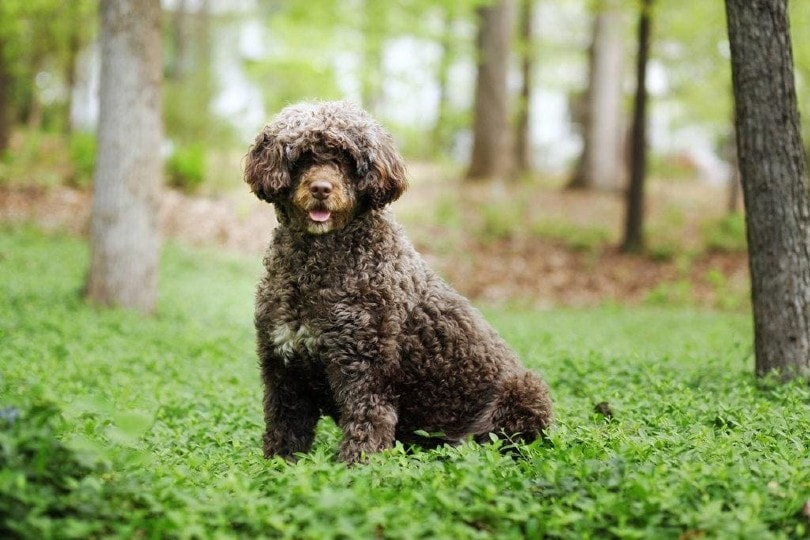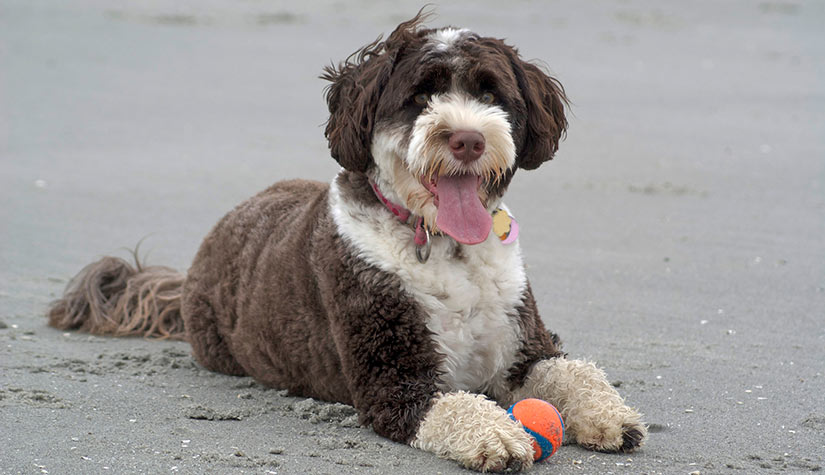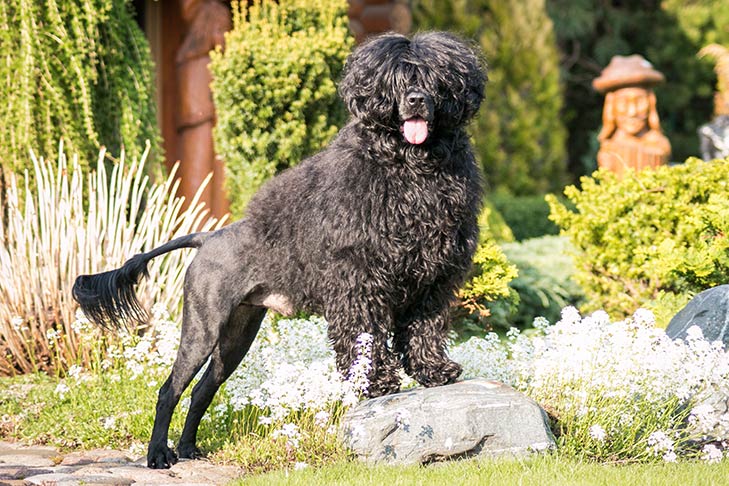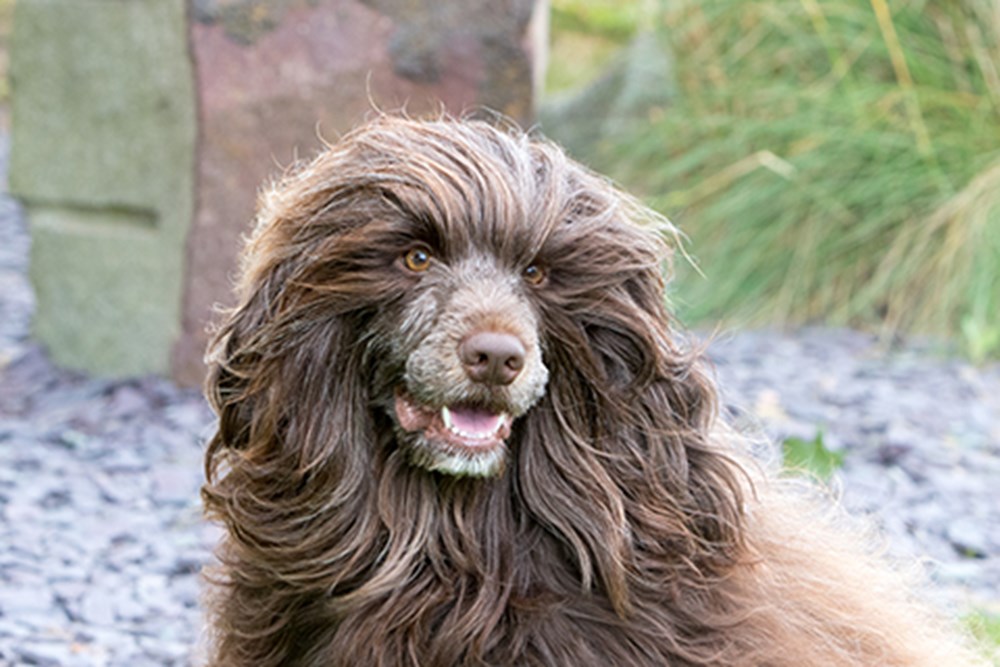The Portuguese Water Dog evolved in Portugal’s Algarve region. From there, the breed spread all over the Portuguese coast. The Portuguese Water Dog is an old breed that is thought to have evolved around 700 BC in the Central Asian steppes. When Vasco Bensaude, a wealthy Portuguese shipping entrepreneur, began to search out fishermen’s dogs for use in a mating scheme to re-establish the breed in the 1930s, the PWD was on the edge of extinction.
Algarbiorum was the name of Bensaude’s kennel, and Leo was his most famous dog. The Avalade kennels in Portugal were founded by Dr. António Cabral. Bensaude spearheaded the re-establishment of the species in Portugal, and he registered his first PWD in 1954.
Portuguese Water Dogs were employed to herd fish into nets and retrieve damaged nets and tackle that had fallen overboard. They also served as messengers between fishermen and from ship to shore. The breed began to suffer the same fate as the Portuguese fishermen as fishing diminished in the early twentieth century.

Two Portuguese Water Dogs arrived in the United States in 1958 as part of a rare breed exchange program. The Water Dog’s popularity developed slowly but gradually. The American Kennel Club welcomed the Portuguese Water Dog into the working group on January 1, 1984. He’s most likely related to the Poodle, a water retriever breed developed in Germany.
Body Characteristics of Portuguese Water Dog
- The Portuguese Water Dog has a firmly formed, muscular body with strong, substantial bone that is neither refined nor coarse.
- When measured from the prosternum to the rearmost point of the buttocks, and from the withers to the ground, the Portuguese Water Dog is somewhat longer than tall.
- The ears are lowered and the head is longer than the muzzle. The eyes of a Portuguese Water Dog can be black or brown in color.
- For swimming, have webbed toes and don’t shed. Portuguese Water Dogs, on the other hand, are more solidly built, with powerful legs and a wavy coat rather than a neatly coiled coat.
Water Male Portuguese Females grow to be around 17 to 21 inches (43 to 53 cm) tall and weigh between 35 and 50 pounds, while males grow to be about 20 to 23 inches (51 to 58 cm) tall and weigh between 40 and 60 pounds (18 and 27 kg) (16 and 23 kg).
The coat of the Portuguese Water Dog comes in two kinds. One is wavy with a subtle gloss, while the other is compact curls. These dogs do not shed and have no undercoat. Black, white, or various hues of brown are the coat colors. There are also black or brown and white combinations. Dogs with bluish complexion have black, white, or black and white hair.
Behavior of Portuguese Water Dog
Portuguese Water Canines are bright, loving, and independent dogs that are easy to train in obedience and agility. They adore being touched and are often sociable to strangers. PWDs are usually content to sit by their master’s side and wait for instructions, and if properly trained, they are willing and capable of following complex commands. PWDs have a strong retrieving instinct, which leads to tugging and gnawing in certain dogs.

Training of the Portuguese Water Dog
Positive reinforcement strategies such as praise, play, and food rewards can be used to train your Portuguese Water Dog. If you keep doing the same thing, he’ll get bored. When they’re young, Portuguese Water Dogs require early socialization and exposure to a variety of people, sights, sounds, and experiences.
Socialization ensures that your PWD puppy develops into a well-rounded adult dog. Water Dogs from Portugal are extremely intelligent. They enjoy learning new things, but they can get bored quickly, so make training is hard and enjoyable for them.
Caring for the Portuguese Water Dog
They demand regular hard exercise as well as mental challenges due to their intelligence and work motivation. They are kind and patient, yet boredom can lead to destructive behavior. Portuguese Water Dogs are active and require 30 to 60 minutes of intense exercise every day. They enjoy swimming and are great jogging partners. If they get enough exercise, they can adjust to apartment life.

To avoid mating and tangling, the Portuguese Water Dog requires constant grooming. They require daily brushing and combing, as well as baths and haircuts on a regular basis. This dog requires a lot of attention.
Portuguese Water Dog Health
Cataracts, progressive retinal atrophy, hip dysplasia, and distichiasis are all hereditary disorders that PWDs are susceptible to. Waterdogs mature between the ages of one and two years, while they attain full size around the age of six to eight months. Typically, they survive between 10 and 14 years.
RECOMMENDED ARTICLES
- Newfoundland Dogs: Characteristics, Behaviour And Health
- 3 Basic Causes of Breathing Difficulties In Dogs, Symptoms, And Treatment
- Bacterial Infection In Dogs-Causes, Symptoms, And Treatment
- Constipation in Dogs – 15 Exclusive Causes, Symptoms, And Treatment
- 10 Top Best Dog Food Brands And The Composition There
If you like, please share it. Sharing is usually caring.

